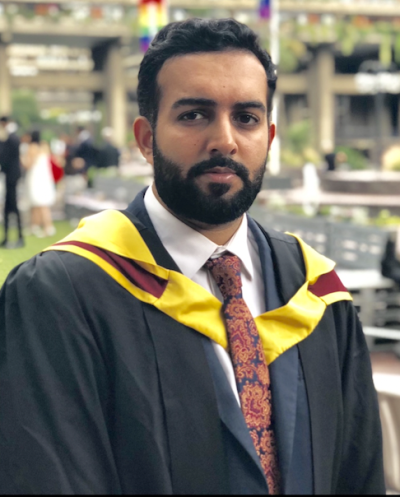11am - 12 noon
Wednesday 7 December 2022
Artificial Intelligence for Necrosis and Mitosis Detection
PhD Viva Open Presentation by Taran Rai
All Welcome!
Free
University of Surrey
Guildford
Surrey
GU2 7XH
This event has passed
Artificial Intelligence for Necrosis and Mitosis Detection

Abstract:
Assessment of histology presented within tissue slides is an essential expert task undertaken by pathologists to determine diagnosis and the aggressiveness of a tumour thus leading to defining appropriate treatment options and determining prognosis for the assumed sick patient. Necrosis and mitosis seen in histological slides are both major criteria that contribute towards the scoring of histological tumour grade in canine Soft Tissue Sarcoma (cSTS). However, conventional manual assessment using traditional pathology approaches typically suffers from inter and intra-observer reproducibility thus impacting grading precision. The digitisation of histological slides into Whole Slide Images (WSI) has created the field of digital pathology, which has enabled a paradigm shift to digital workflows and the use of AI to address such inter- and intra-observer variations. The focus of this thesis is on developing computational methods to aid workflow for necrosis and mitosis detection. The exemplar used here is a subtype of cSTS known as canine Perivascular Wall Tumours (cPWT).
This thesis focuses on two different approaches for necrosis and mitosis detection respectively. Using deep learning, we describe a novel approach for automating necrosis detection in WSIs, tested on a cSTS dataset consisting of cPWTs. Often considered a texture classification problem, blind to location, a patch-based deep learning approach was developed where different variations of training a DenseNet-161 deep learning Convolutional Neural Network (CNN) architecture were investigated as well as a stacking ensemble. An optimised DenseNet-161 with post-processing produced a hold-out test F1-score of 0.708 using a novel F1 score optimisation approach, demonstrating state-of-the-art performance. This represents a novel first-time automated necrosis detection method in the cSTS domain as well specifically in detecting necrosis in cPWTs demonstrating a significant step forward in reproducible and reliable necrosis assessment for improving the precision of tumour grading.
Mitosis detection is often considered an object detection problem and works well in a multi-stage approach. Consequently, we compiled in essence an ablation study, breaking down the many steps used in a multi-stage approach. Generating mitosis annotations is a long and arduous process open to major inter and intra-observer variability. Therefore, we performed a two-step algorithm-aided annotation process; the second step using a pretrained Faster R-CNN model further trained on the initial annotations. The onboard pathologists reviewed the false positive mitosis candidates and determined whether these were overlooked mitosis candidates thus refining the dataset. We then trained our Faster R-CNN model on this refined dataset. Taking inspiration from our necrosis work, we applied an optimal decision threshold based on maximising the F1-score. The optimal decision threshold was predetermined using the validation set and produced our best F1-score of 0.75 which is competitive with state-of-the-art in the canine mitosis detection domain. Further stages were added to the approach where ImageNet pretrained bottleneck features extracted from mitosis candidates were fed into a logistic regression model, with little improvement, suggesting that to learn the differences between true positive and high probability threshold false positive mitosis candidates may require a more complex model.
Attend the event
This is a free hybrid event open to everyone.
